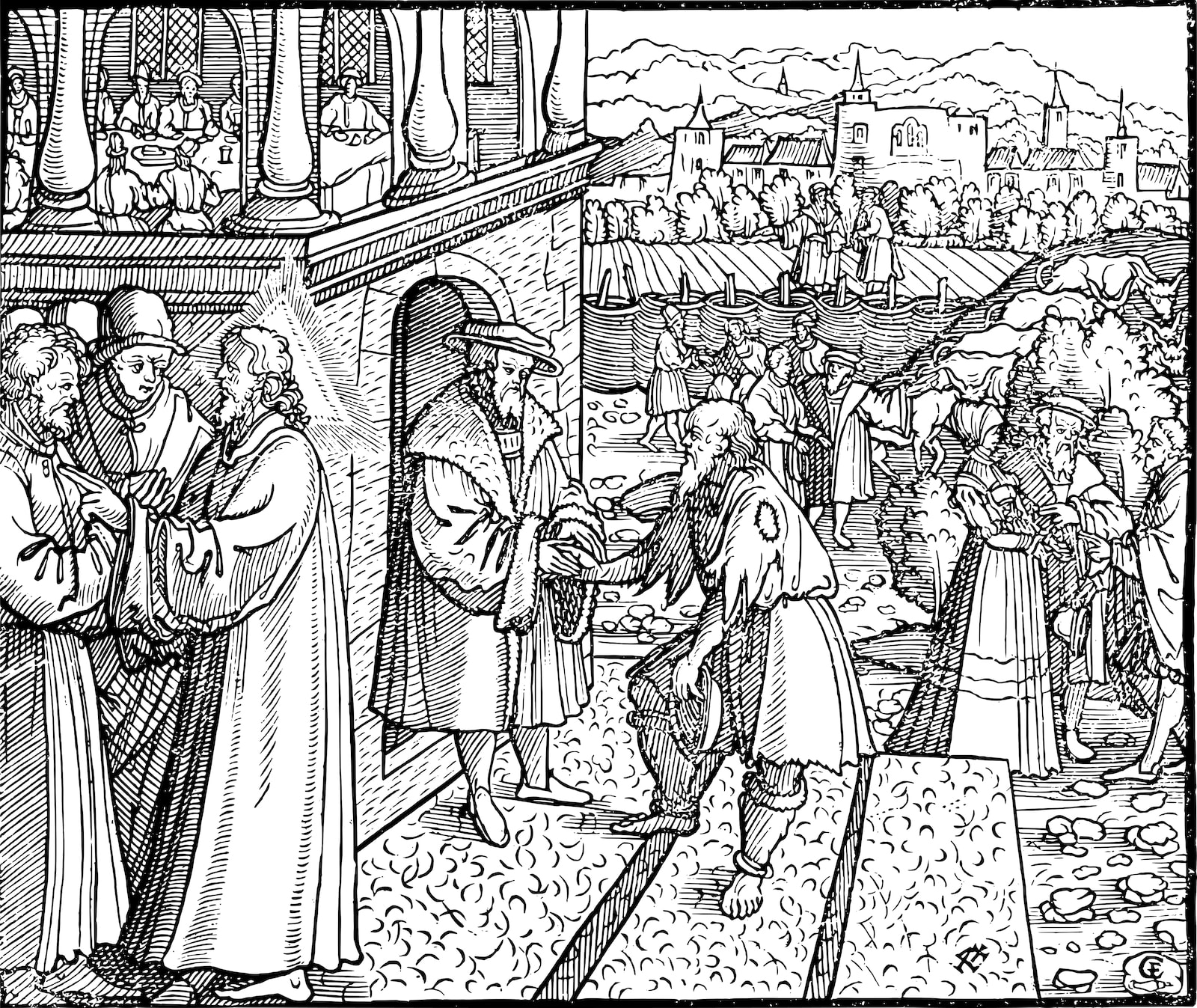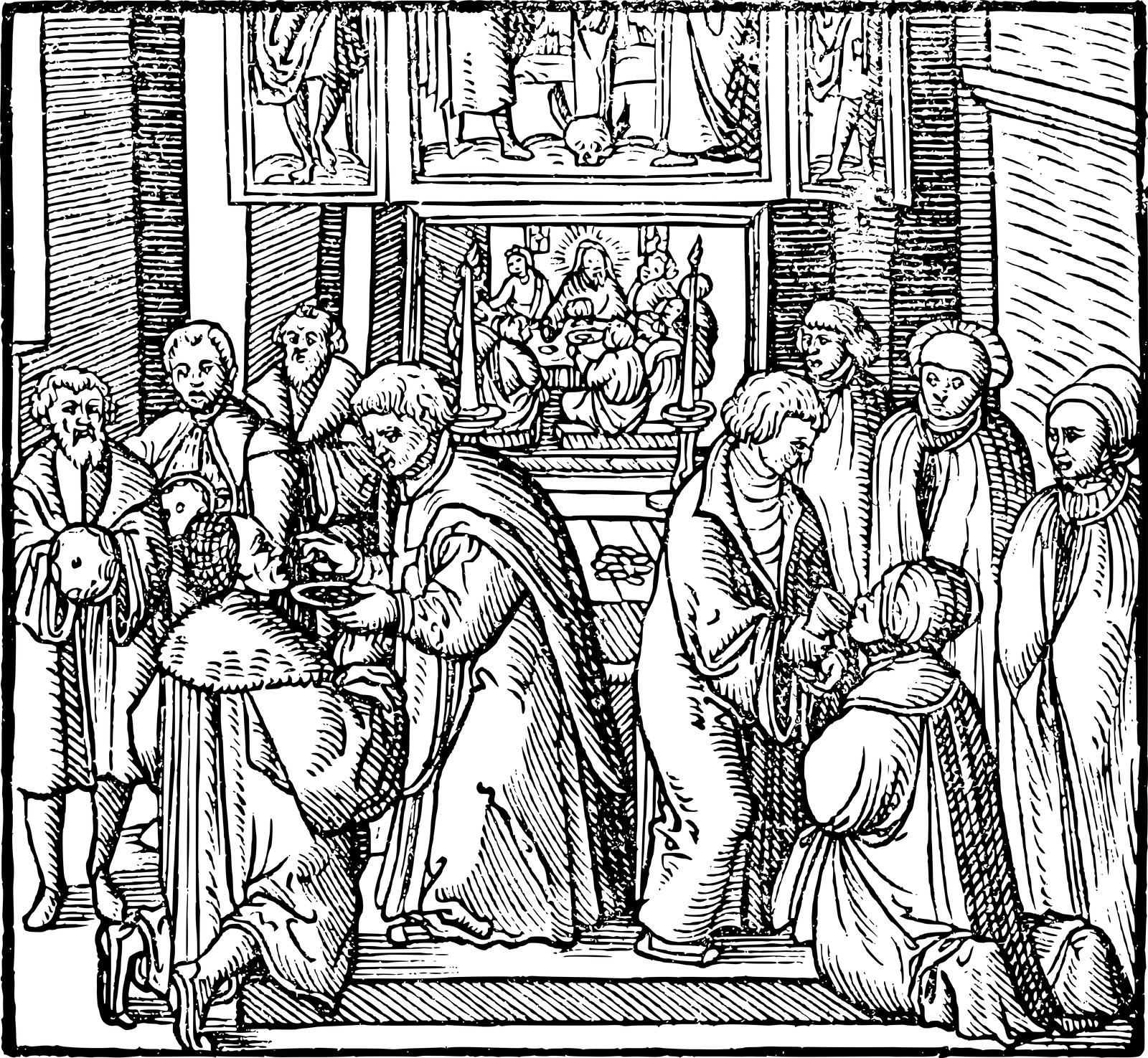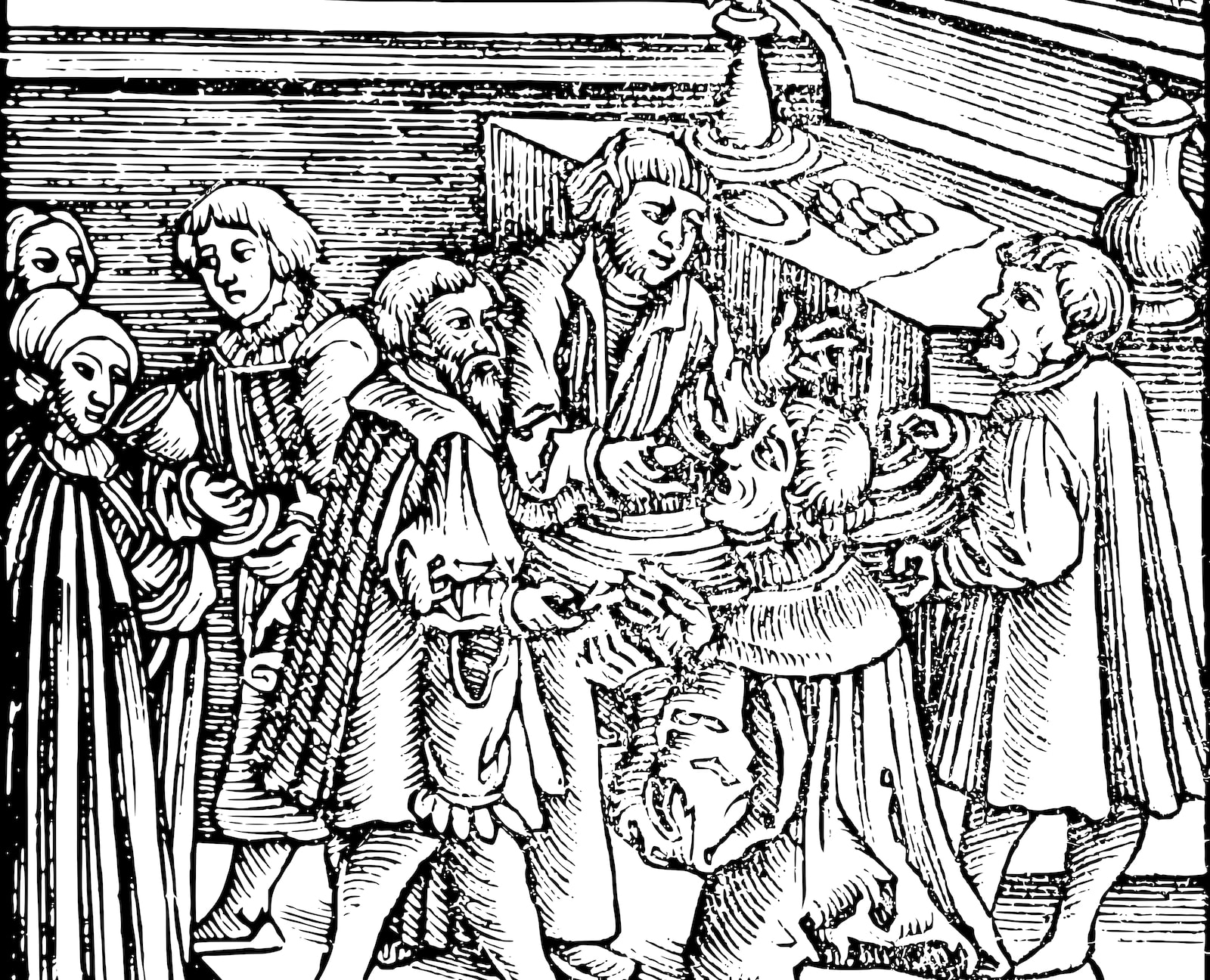Salute the last and everlasting day,
Joy at th’ uprising of this Sun, and Son,
Ye whose true tears, or tribulation1
Have purely wash’d, or burnt your drossy clay.
Behold, the Highest, parting hence away,
Lightens the dark clouds, which He treads upon;
Nor doth He by ascending show alone,
But first He, and He first enters the way.
O strong Ram, which hast batter’d heaven for me!
Mild Lamb, which with Thy Blood hast mark’d the path!
Bright Torch, which shinest,2 that I the way may see!
O, with Thy own Blood quench Thy own just wrath;
And if Thy Holy Spirit3 my Muse did raise,
Deign at my hands this crown of prayer and praise.4
John Donne was born in 1572 to a recusant family in England. To be recusant meant that one practiced Roman Catholicism, which was illegal in England at that time. Privately educated, he could not graduate from university since he would not take the Oath of Supremacy, which required state and church officials to acknowledge the monarch of England as the head of the church in England. During and after his education, Donne led a prodigal life, literally wasting his inheritance on women, literature, pastimes, and travel. He was a soldier and chief secretary to Sir Thomas Egerton.
Donne secretly married Anne More in 1601, against the wishes of her father. This ruined Donne’s career and brought him to prison. After prison, Donne lived a life of financial insecurity. His wife Anne bore him twelve children in sixteen years of marriage. The stresses of life were almost too much for Donne to bear, leading him to write his unpublished work Bianthanatos, his defense of suicide. Anne died after bearing a stillborn child, their twelfth, in 1617. Donne mourned her deeply and commemorated her in his 17th Holy Sonnet.
Having converted from Roman Catholicism to Anglicanism, Donne was awarded an honorary doctorate in divinity from Cambridge University and became a Royal Chaplain. In 1621 Donne was made Dean of St. Paul’s, a position he held until his death in 1631.
Donne is the main and best known representative of the movement known as metaphysical poetry. Donne’s life grants us an insight into his poetry. Donne’s earliest poetry was profane and erotic. The misfortunes in Donne’s life seared away the stubble of fleeting eroticism to a lasting, eternal pleasure of Christ. His challenges to death and the grave on the basis of Christ’s resurrection and ascension are powerfully depicted in poems like “Death be not Proud.” In fact, the last sermon that the dying Donne preached was entitled “Death’s Duel,” based upon Psalm 68:20. His last words were these: “[W]e leave you in that blessed dependency, to hang upon him that hangs upon the cross, there bathe in his tears, there suck at his wounds, and lie down in peace in his grave, till he vouchsafe you a resurrection, and an ascension into that kingdom which He hath prepared for you with the inestimable price of his incorruptible blood. Amen.”
John Donne’s magnificent sonnet cycle is entitled “La Corona,” or “The Crown.” A sonnet crown is a sequence of sonnets concerned with a single theme. Each of the sonnets explores one aspect of the theme. The sonnets are not just connected by theme, but they are also connected poetically. The last line of each sonnet is the first line of the next sonnet. And so, after an introductory sonnet, we move through our Lord’s life: the annunciation, nativity, the Boy Jesus at the temple, crucifixion, resurrection, and the ascension. And each sonnet is connected to the previous one, both thematically and by the last line of the preceding sonnet.
One poetic device that Donne employs is called the metaphysical conceit. A metaphysical conceit is a complex, and often lofty, literary device that makes a far-stretched comparison between a spiritual aspect of a person and a physical thing in the world. The first example of this is the Son of God, who ascends to heaven just like the sun rises in the morning sky. The images of the Son as a sun and a torch teach us that Christ is the Light of the World, which lights the way to heaven. The “darkened clouds” work on both a literal and spiritual level. Our sin, which darkened the heavens, is now dispelled by Christ. This enlightening happens both objectively in the ascension but also subjectively in our hearts.
But Christ’s ascension not only shows the way to heaven by illumination. Christ has opened heaven for us by waging spiritual warfare. Donne uses a beautiful and complex image of Jesus as a ram. Christ is a battering ram, knocking down heaven’s pearly gates on our behalf. But this image of a ram is also nuanced when he uses “mild Lamb” in the next line. Here, we see that Christ is both a battering ram, but also a sacrificial ram, whose blood quenches “Thy own just wrath.” This collage of images recalls warfare, forgiveness, the Old Testament sacrificial system, and its connection to the crucifixion of Christ.
I encourage all of you to not only read this poem, but to learn it by heart. Its imagery is not only beautiful, but it accurately and poignantly teaches us how important and necessary Christ’s ascension was for us.
End Notes
1 Pronounced Tri-bu-lay-shee-un
2 “Shinest” may be pronounced as “shin’st” to keep the meter, or left as an irregularity.
3 Pronounced throughout Donne as one syllable.
4 A sonnet uses iambic pentameter, or five measures (feet) of iambs, which are usually two syllables of an unstressed and then stressed syllable (buh-BUM), ten syllables altogether. Donne knows the rules and breaks them beautifully in this sonnet to emphasize certain words and make the pace less monotonous.



